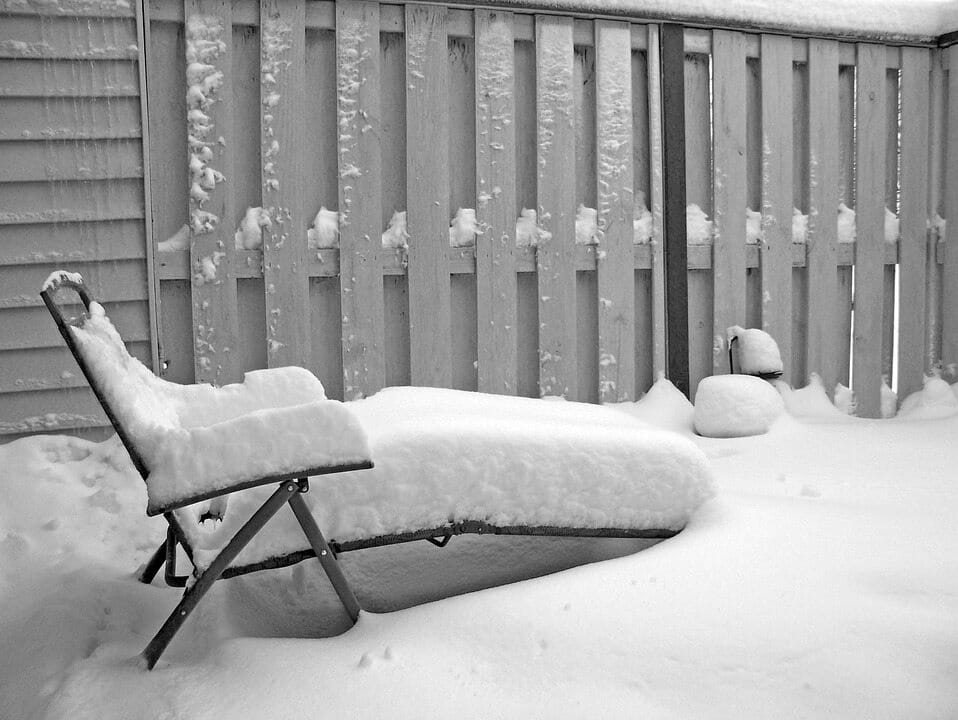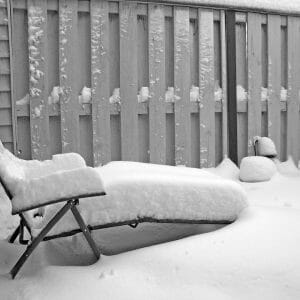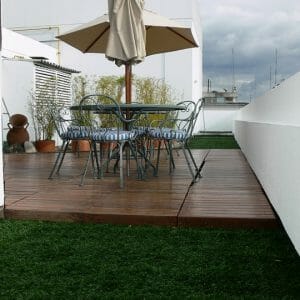
 Is your patio prepared for the upcoming winter season? With winter comes cooler temperatures, drier air and the possibility of snowfall, all of which can affect your patio. This doesn’t necessarily mean that you have to stop using your patio for the season. Rather, you should take the necessary steps to “winterize” it beforehand. Doing so will allow you and your family to enjoy this outdoor extension of your home throughout the year.
Is your patio prepared for the upcoming winter season? With winter comes cooler temperatures, drier air and the possibility of snowfall, all of which can affect your patio. This doesn’t necessarily mean that you have to stop using your patio for the season. Rather, you should take the necessary steps to “winterize” it beforehand. Doing so will allow you and your family to enjoy this outdoor extension of your home throughout the year.
Clean It
The first step in winterizing a patio is to clean it. Using a broom or leaf blower, remove any lingering leaves, pine straw or branches that have fallen on your patio. Neglecting this otherwise simple step can result in a stained patio deck. Moisture will accumulate in this debris, causing colored compounds to leave onto and into your deck.
Cover Grill and Fire Pit
If you have a grill or fire pit on your patio (or both), you should cover it with a protective tarp. Depending on where you live, you may not receive much rain during this time of year. However, you may still receive some snowfall — and that snow can cause metallic objects like a grill or fire pit to rust. Covering them with a vinyl tarp prevents the intrusion of water while protecting against rust and corrosion.
Alternatively, you may want to bring your grill or fire pit indoors for the winter. Bringing a large grill indoors isn’t always feasible, though. But if you own a small, portable fire pit, you can certainly bring it indoors. Just remember to wait a full 48 hours after lighting it to ensure it’s fully cooled before bringing it inside.
Stain with Water Repellent
 You can further protect your patio from damage by staining it with a water repellent product. Most home improvement stores, including Lowe’s and Home Depot, sell a variety of water-repellent stains. You typically apply them just like paint, and once they are finished drying, it creates a waterproof barrier over your patio. Staining a full-sized patio is somewhat tedious and time-consuming, so be prepared to invest a full 1-2 days to this project.
You can further protect your patio from damage by staining it with a water repellent product. Most home improvement stores, including Lowe’s and Home Depot, sell a variety of water-repellent stains. You typically apply them just like paint, and once they are finished drying, it creates a waterproof barrier over your patio. Staining a full-sized patio is somewhat tedious and time-consuming, so be prepared to invest a full 1-2 days to this project.
Protect Patio Furniture
When winterizing your patio, you’ll need to take measures to protect your furniture from damage. Generally speaking, the material from which the furniture is made will determine the best method of winterizing it. Here’s a breakdown of some of the most common patio furniture materials and how to winterize them.
- Plastic: the most “robust” material, plastic furniture requires little maintenance, nor does it need any protection from the winter elements.
- Wicker: susceptible to damage when left outdoors for long periods of time; bring wicker furniture indoors for the winter.
- Teak: whether it’s treated or not, furniture made of genuine teak wood is naturally protected against the winter elements thanks to its concentration of water and rot-repellent oils.
- Aluminum: furniture made of aluminum should either be brought indoors or coated with a layer of automotive wax.
- Fabrics: unfortunately, fabric furniture is highly susceptible to damage when left outdoors, so bring it indoors for the winter.
Take Down Umbrellas
Patio umbrellas offer an excellent source of shade. Whether they are secured to a table or to the patio deck, it’s a great way to enhance your patio. For the winter, however, you should take down any umbrellas overhanging your patio. If it happens to snow, excess snow may accumulate on the umbrella, causing it to buckle and sustain damage.
Bring Potted Plants Indoors
If you have potted plants on your patio, go ahead and bring them indoors. While different plants are more tolerant to cold weather than others, it’s usually best to err on the side of caution by bringing them all indoors. Placing them in a sunny location next to a large window will ensure they stay warm throughout the winter season.
Winterize Outdoor Plants
Of course, you may not be able to bring all of your plants indoors. Assuming you have plants growing in the ground near your patio, you should follow some basic precautions to help them survive winter. Adding a layer of mulch around the base of your flowers, plants and trees, for instance, is a simple and effective safeguard for the winter weather. Mulch acts as natural insulation, reducing the loss of heat while subsequently protecting against frost shock.
For evergreen plants, consider making a burlap shield. Evergreens are particularly susceptible to cold weather damage, as sub-freezing temperatures prevent the roots from absorbing water. And if they aren’t getting water, they will likely turn brown and die. To prevent this from happening, set up four stakes around your evergreens, securing a burlap screen to the stakes. In addition to keeping your evergreens warm, this also serves as a windbreak, protecting your plants from strong winds.
If you have any questions regarding how an S&S Fire Pit can enhance your outdoor living space; We can help. https://ssfirepits.com/contact/


